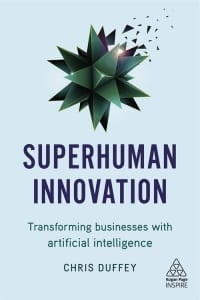Designing an AI Strategy for Superhuman Experiences

Before starting, define what problem needs to be solved and who needs the solution. It’s important to be very specific about your audience because these are the people who will actually purchase or use the product or service. What the end users need can be discovered using a variety of techniques, including market research, surveys and so on. Without defining the problem and the market, it’s likely the ROI will be weak and making sales will be difficult. Often, this is seen as technology for technology’s sake, or doing it just because it can be done. In other words, start with a business problem, an unused data set or survey the new AI techniques, which might identify a problem, a solution and a customer.
To operationalize an AI framework, use the concept of People, Processes, Data and Technology. With People, the concern is with building a team with the right skill set and organization. Processes deal with how the project is developed and the different methodologies available to achieve the goal. With Data, have a data strategy and focus on quality not quantity, as well as accessibility. Finally, Technology provides the software and hardware considerations on which to build the project. This approach can be molded and customized to fit the needs of any project. Just to be clear, this is a blueprint and is not intended as a straitjacket. Use the framework to enable progress, not to restrict your freedom of action.
If an organization is just starting with AI, which many are, change management strategy is very applicable. Change management helps build advocacy and a shared vision within organizations. The thing that many leaders understand is people implement change and that you can’t exclude people from the equation. Plans and processes are necessary but change often fails because the human side is not appropriately factored into the process.
For an AI project to be successful, somebody must ‘own’ it. This doesn’t imply that the project needs to be restrictively managed; rather, one or more senior stakeholders in the business must support the project, its goals and the team. And where the project sits depends on how your company is organized. No matter how a company is organized, the AI team must be embedded within the business and not siloed. If an AI team is isolated from the rest of the business, then their efficiency will be reduced, and they may not consider the needs of end users and stakeholders within the organization.
There also needs to be consideration of how data scientists and AI engineers work together. Are they working as one team or are there multiple teams? Do they work for the same organization? These and other questions must be addressed from the outset. First, you need to define the role of the data scientist. Are they a business or domain expert, statistics expert, programming expert, data technology expert or a visualization and communications expert?
To infuse AI into a company’s culture, communicate throughout the business to increase awareness and acceptance of AI, and build an understanding of the purpose, terms and options available. Your business can also provide educational opportunities to bring members of your organization in all areas of your business up to speed on the concepts. The team can be based out of IT, which would be IT-centric, integrated between data science and IT or a specialized group with team members from throughout the business.
Ultimately, start with the problem and work towards the solution with AI. AI is a profoundly powerful tool to get to that solution, yet there are many things to be considered; including the people who staff the projects and their skills, specialties and experience. However, choosing the right strategic AI framework will guide the project to success.
About the Author

For more information, please visit: https://www.koganpage.com/product/superhuman-innovation-9780749483838







Leave a Reply
Want to join the discussion?Feel free to contribute!